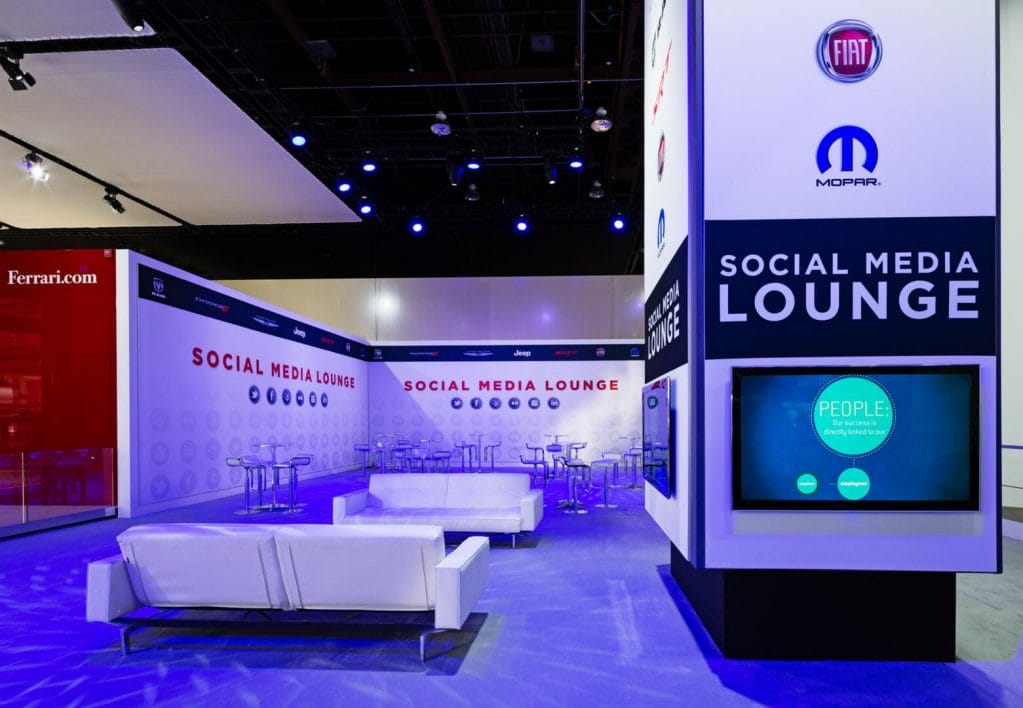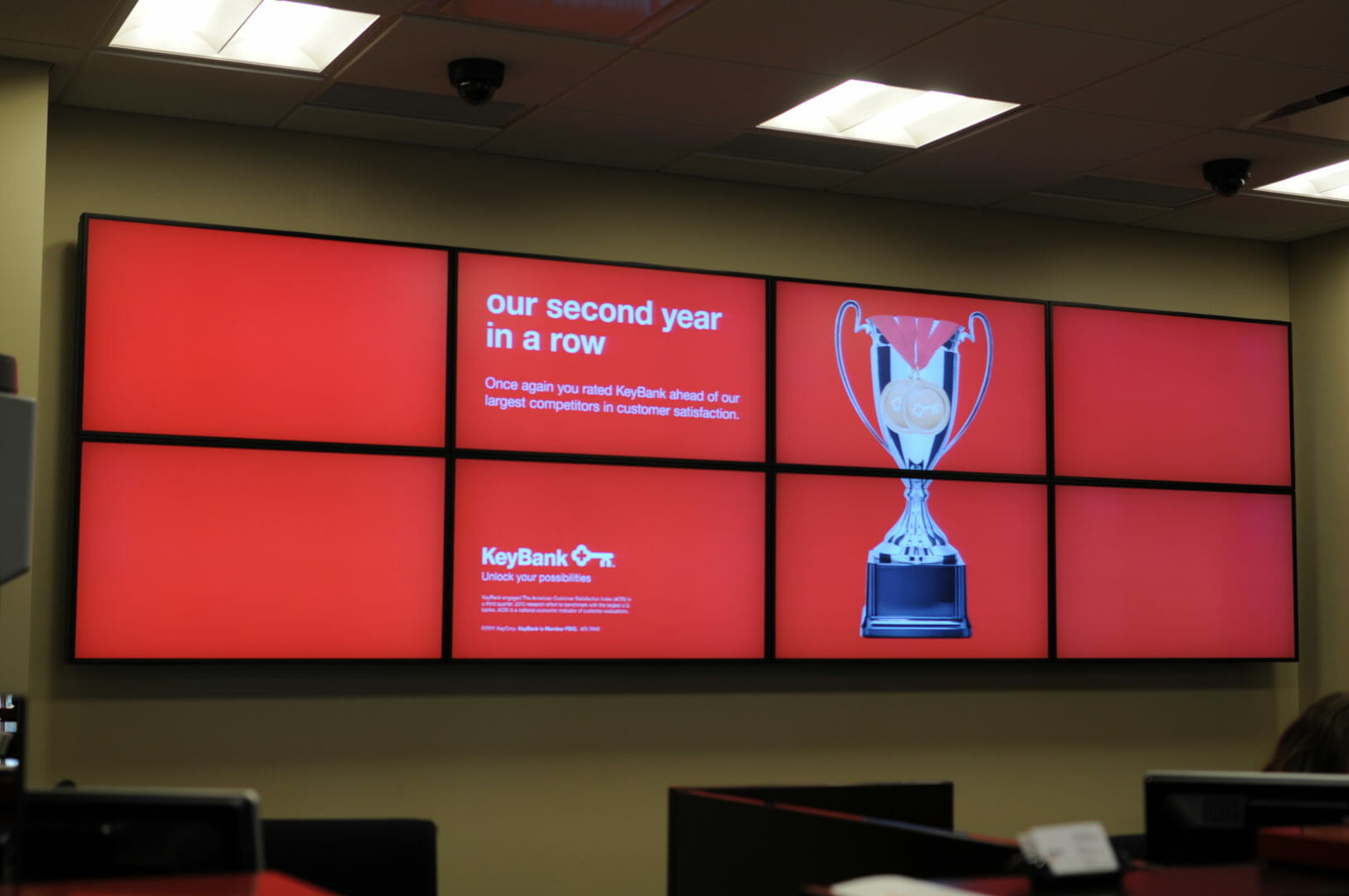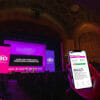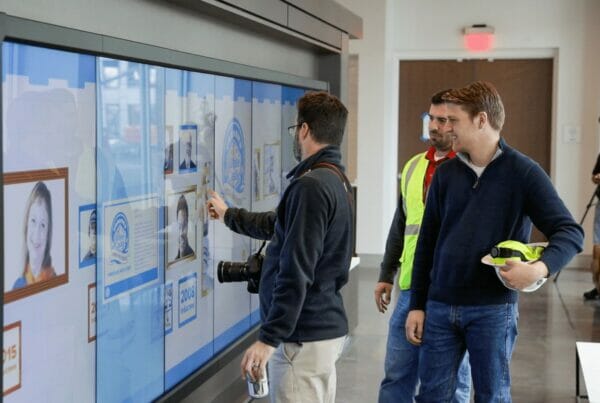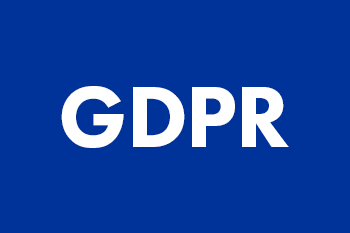The Needs are Vast & Organizationally Dependent
When it comes to digital signage, we’ve literally seen it all. From the company that just wants to “throw some PowerPoints up” (yes, we’ve actually had that told to us), to the multi-location organization that needs a digital signage solution that spans not only, the warehouse, main office, lobby, and cafeteria, but the globe as well. In our decades of experience, we’ve seen many mistakes in implementing digital signage. We thought we’d share some of the common pitfalls with you so that you can avoid them during your next digital signage initiative.
Too many or too few displays for the size of the space or number of employees.
Many companies miss the mark when it comes to having the appropriate number of displays in their space. This can take on two forms, the first being that there are not enough displays when compared to the number of total employees, or visitors to the space. This can cause crowding and huddling around the limited displays that are in use. It can even prevent some potential viewers from seeing the content at all.
The second form this digital signage mistake takes on, is to not have enough displays to accommodate the square footage of the space. This can lead to customers, clients, and employees not being able to see the content on the displays because they are too far away from them. This causes issues often in retail environments, quick-serve restaurants, within corporate offices, and especially in warehouse settings.
It’s also vitally important that you choose the correct placement for your displays within your building. Even if you have the correct number, they need to be placed in spaces that maximise exposure and put content in a position to have success. If you’d like to know more about Bluewater’s recommendations for the number of displays for your space, or even hear more about how a digital signage consultant could help with your project, simply inquire here. We’ll gladly come out and provide a free site survey and discuss recommendations.
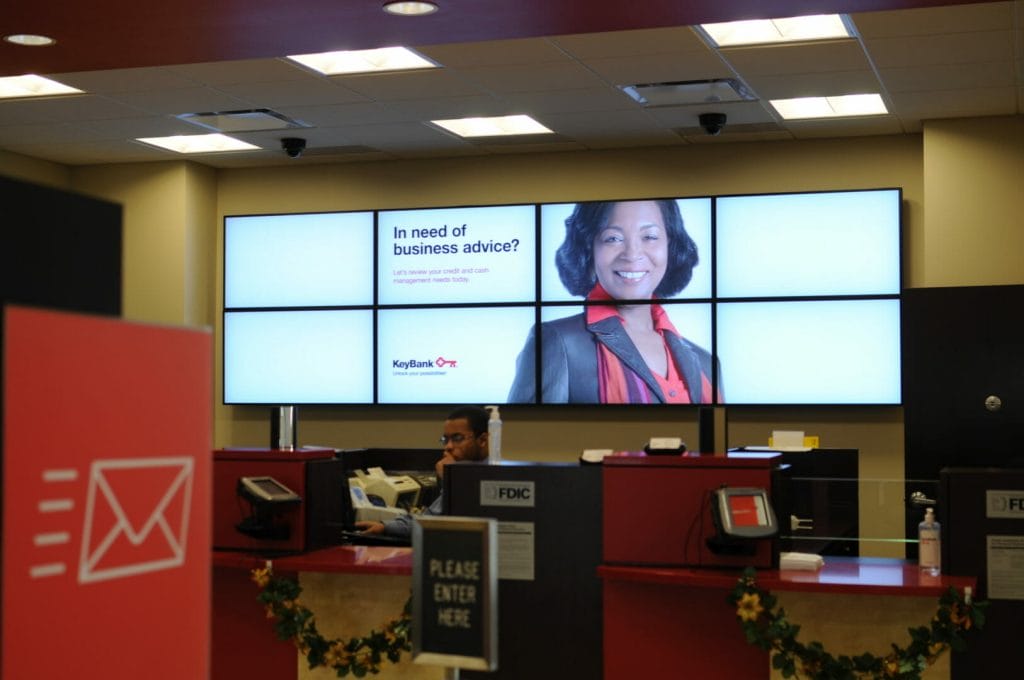
Boring or Static Content (too much text)-Lack of Fresh and Compelling Content
Yes, that’s right; content is still king, and that’s true not just in the marketing world, but also as it pertains to digital signage. It happens far too often that a decision maker will call us and know exactly what they want (brands, specs, number of displays etc…), but they’re planning on putting static company content on display that gets updated quarterly. Let us be the first to tell you, if you’re doing this, digital signage isn’t worth the investment, and you’re absolutely 100% doing it wrong! You’ll never see positive ROI from a program like this.
Bluewater recommends featuring interactive content, video content, and refreshing the content with compelling messaging frequently. For some companies this means daily, others weekly, or even monthly. If you have the resources in-house to manage this type of a refresh rate, we encourage that you use them. If not, we have a full service creative team that can work within your brand guidelines to create compelling and memorable content
Implementing Without a Goal or Intent
One of the most frequent mistakes we see in digital signage implementations is launching a program without a strategy or a goal in mind. You, your team, and your company should have a clear vision with measurable goals before embarking on the journey that is a digital signage project.
Answering questions during the planning process such as the following will help create a concise digital signage strategy:
Who are you targeting? (Customers, clients, employees etc…)
What will success look like to outsiders, and non-stakeholders within your company?
What messages are you trying to convey?
and, maybe most importantly…
What type of experience do you want the viewer to come away with?
These base level questions will help to insure that the conversation is going deep enough, and allow for metrics to be documented for the project prior to it’s launch. A visual framework of the expected outcomes can go a long way towards driving success in your digital signage project.
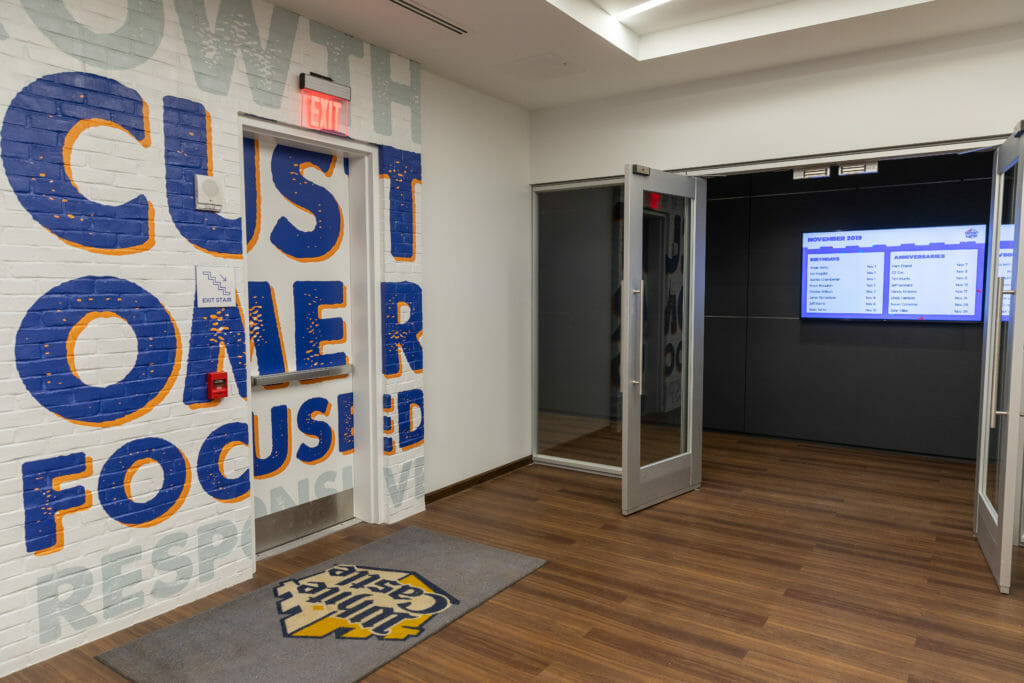
Lack of Design with the end user in mind
Far too many digital signage projects focus on the needs of the company, rather than on the needs of the end-user. For example, you’re not putting signage into your warehouse for the IT team managing the project. Rather, you’re doing it for the employee who is constantly on the go and needs a way to feel connected to the rest of the workforce. Displaying content regarding benefits updates, upcoming company outings, or even “real-time” sales data can do wonders for company-wide moral and inner-connectivity in this scenario.
Testing of hardware and software prior to launch
Many times both AV integrators and their clients miss this stage entirely in a digital signage installation. It’s important to maximize transparency and communication and test both the hardware (displays and media players) and the content management system prior to launch. This testing can eliminate the risk of launching with defective equipment, and insure that the new program provides a polished and premium image to stakeholders both internal and external.
Lack of a managed services plan post installation
Launching a digital signage initiative without a managed services or maintenance plan is like driving around that new Mercedes you just purchased without car insurance. You’d never do that right? Exactly, and far too many companies end up saving a few dollars out of the gate only to be saddled with long-term issues and recurring costs without a long-term maintenance plan. Peace of mind and near 100% up-time reliability are important, thus managed services can’t be forgotten.
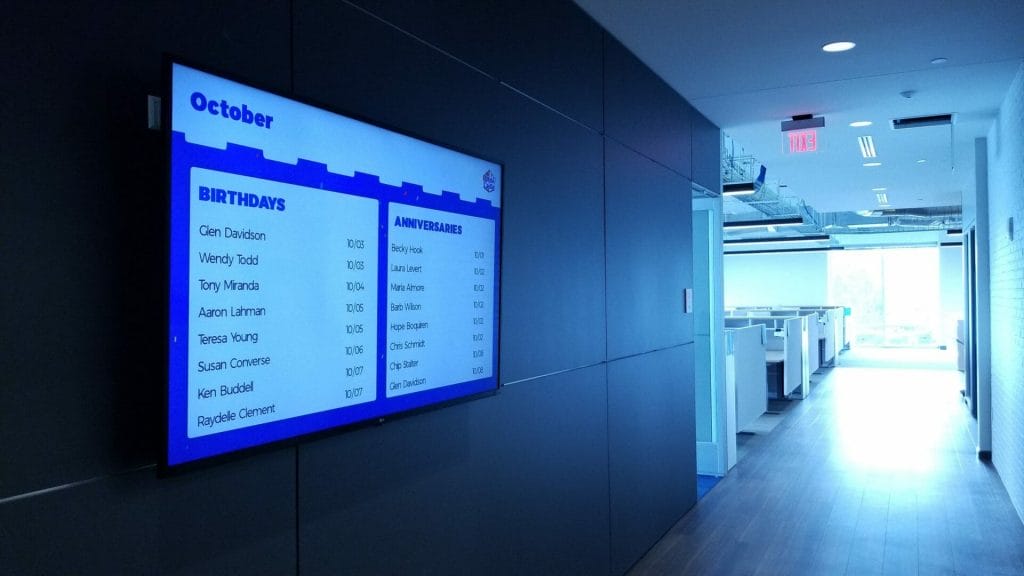
Looking at implementation from a large capital expenditure perspective.
Everyone; and we mean everyone should calculate their return on investment when it comes to monetizing a digital signage program. One-such way to do this is to look at the lifetime value of both the content and the hardware itself. There’s undeniably a brand benefit to be gained as well since a strong digital signage program makes businesses appear polished and thorough in their processes shown to their consumers if done properly.
For many years, one of the biggest hurdles for implementing a digital signage program was the large up-front capital expenditures that it took to launch them. Not every company; small, medium, or enterprise sized has the readily available budget to properly launch or update digital signage. Often times, infrastructure costs and office technology improvements are some of the first things cut when reforecasting or budget constraints hit.
This is no longer the case as Bluewater now offers a complete end-to end digital signage solution from the planning & strategic consulting stages through installation and including managed services. Not only this, but we do it as a monthly subscription! This means digital signage now becomes an operating expenditure, so there are not the large up-front costs like most are accustomed to.
Not only this, but we account for technological obsolescence as well. At the end of your subscription term we have the ability to refresh and upgrade your software and hardware to the latest cutting edge offering,

To learn more about digital signage as a subscription click here
Accounting for lighting (i.e.: bright lobbies)
Choosing the colors of on-screen content, or even the positioning of digital signage in bright spaces are often two forgotten elements of implementing a digital signage program. Using bright colors, or too many colors together can be difficult to read in any lighting environment, yet alone a bright one such as a lobby. These spaces often feature both the artificial lighting of the building and the natural sunlight coming in the windows from outside.
You must make sure there is enough contrast. Contrast between the foreground and background is important when it comes to maximizing readability. White text on a dark background is often easiest to read in brighter environments while colored texts on lighter or brighter backgrounds should be avoided.
Lastly, fonts are important in bright environments. We recommend not using a wide variety of font sizes or styles, but rather sticking to something thick, straight-lined and easy to read. Keep it consistent throughout the signage. The Serif font family is often the most legible on large format displays. However, don’t forget, digital signage is meant to be a visual medium and when possible, we recommend avoiding text all together. Choose images, graphical representations, and video when possible. This will increase the engagement and the likely success of your digital signage implementation.
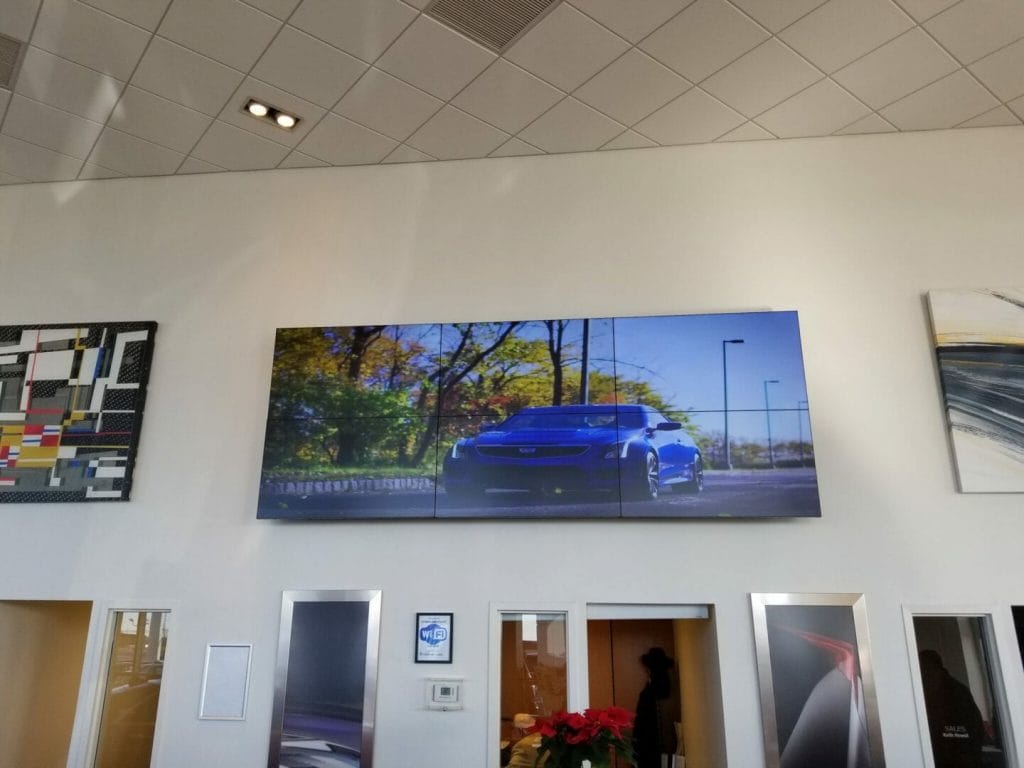
Bluewater has been in business for over three decades and provides digital signage expertise ranging from consultation to installation, and even managed services. To learn more about digital signage and our process click here.
If you’d like a free consultative site visit you can request one here. We would be happy to answer any additional questions that you might have.
